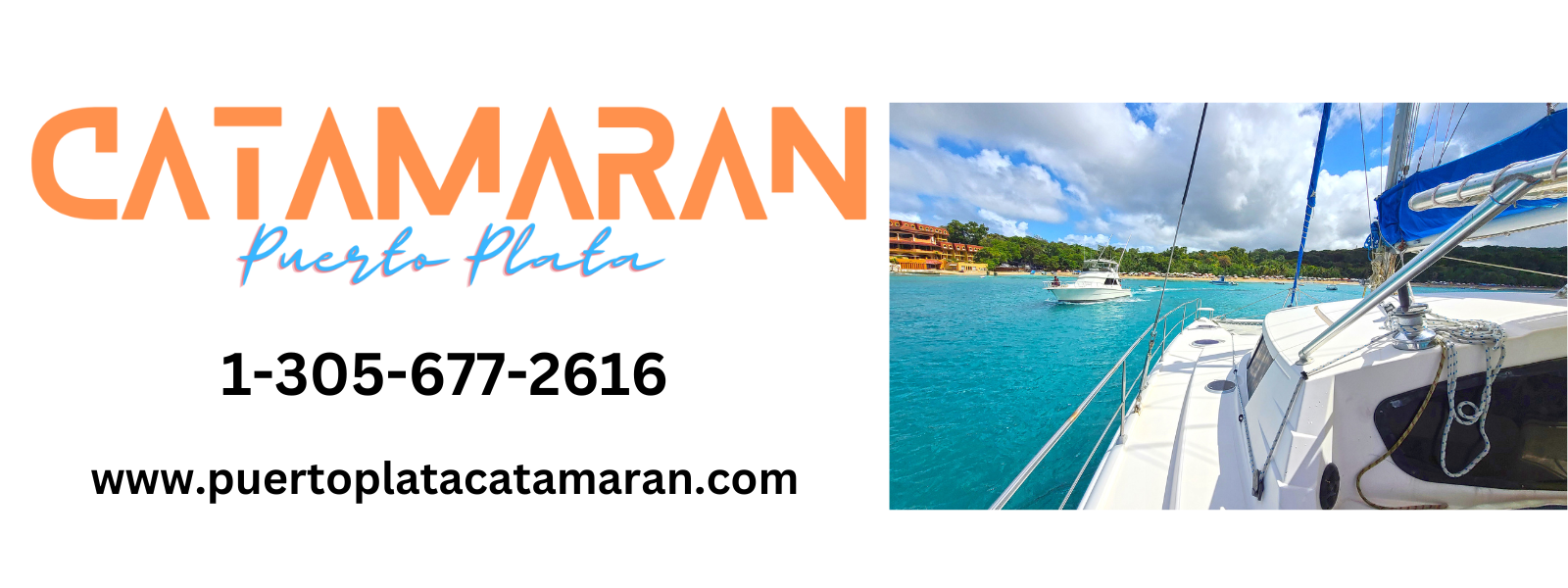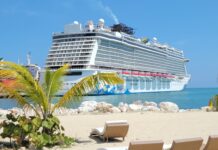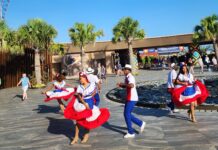Dominican Larimar is a unique semi precious, captivating blue stone considered a testament to the beauty of nature and the marvels that lie beneath the Earth’s surface. With its stunning hues reminiscent of the Caribbean Sea, Larimar has captured the hearts of gemstone enthusiasts and collectors worldwide.
Larimar was discovered in 1916 when a Spanish priest named Miguel Fuertes Loren reported the existence of a “rock layer measuring 49 m3 in volume (copper vein) containing 33% magnesium.” he tried to get a permit to mine it, but it was denied as the DR had no knowledge of Pectolite by then.

Later on, Dominican Miguel Méndez and Peace Corps volunteer Norman Rilling, stumbled upon a captivating blue stone on the shores of the Caribbean Sea in 1974. Natives believed that the stone came from the sea, and they called the gem Blue Stone. The few stones that they found were alluvial sediment, washed into the sea by the Bahoruco River.
Recognizing its extraordinary beauty and rarity, Méndez named the stone after his daughter, Larissa, combined with the Spanish word for sea, “mar.” Tourists visiting Puerto Plata and other destinations within the Dominican Republic fall in love with this stone.

Dominican Larimar is found in volcanic rocks from the Cretaceous-Miocene belonging to the Dumisseau Formation, associated with the Caribbean island arc and the oceanic plateau. The basic rock forms the core of the main anticline located in the Caribbean Sea and two smaller anticlines found in the Bahoruco Range.
The volcanic rocks are covered by Cenozoic (Paleocene-Miocene) shallow-water carbonate sediments and Quaternary coastal and river deposits. Strongly altered volcanic rocks (mainly basalt) and pyroclastic rocks, such as tuff and tuffites, are cut by veins filled with epigenetic Larimar. Additionally, Larimar has been found within fragments of trees covered by lava as a result of the replacement of charred wood tissue.

Composition and Unique Properties:
Larimar is a type of pectolite, a mineral that forms in cavities within volcanic rocks. What sets Larimar apart is its exceptional blue color, which ranges from light sky blue to deep azure, reminiscent of the crystal-clear waters of the Caribbean. The stone’s captivating hue is attributed to the presence of copper within its chemical makeup. Its diaphaneity is Translucent to opaque, with Silky, sub vitreous luster.

Many millions of years ago, the island of Santo Domingo began to form in parts, emerging from the depths of the sea. First came the Central Mountain Range, made up of volcanic rocks. Approximately 100 million years ago, the emergence of the Bahoruco Range began, in the southwest of the island, specifically in its eastern portion. In its composition, volcanic rocks known in geology as andesites and basalts also stand out.
Silicate minerals mixed with components such as aluminum, sodium, calcium, iron, etc., stood out, forming essential and secondary minerals. Among this entire chemical package, a very rare association was formed in nature: silicon-oxygen with sodium and calcium elements.
Larimar Mining
The Larimar Mine, popularly known as “Los Chupaderos,” gets its name from the town where the blue pectolite mine was located, approximately 10 kilometers from the city of Barahona, in the Enriquillo region.
It is the only mine in the world for this striking stone, which gives it greater value. Currently, there are 77 artisanal Larimar extraction wells, 35 located within the Larimar Mining Tunnel, and 42 in the Old Mine, which reach depths of up to 300 feet. The larimar mine is rudimentary, covering an area of approximately 12 acres.
Video by Andariego (Spanish), the Best Video of the Larimar Mine:
Much of the muddy, sweaty work is done with pickaxes and shovels, though some portable power tools are used, too. It is estimated that 400 people work in the Larimar mine, managed by the Larimar Extractors Association “Nuestra Señora de Las Mercedes,” the Larimar Extractors and Processors Production and Labor Cooperative. Currently, the country exports over US$8.0 million worth of Larimar derivative products.
Photo Gallery: Larimar Mine
Larimar’s metaphysical properties and symbolism:
Beyond its aesthetic appeal, Larimar is believed to possess various metaphysical properties and is often associated with tranquility, harmony, and a deep connection to the sea. It is considered a stone of calm and relaxation, helping to alleviate stress, anxiety, and negative emotions.
Appreciation and Jewelry:
Larimar’s allure has captured the attention of jewelry designers and gemstone enthusiasts worldwide. Its exquisite beauty, combined with its limited availability, makes it a highly sought-after gemstone. Larimar is skillfully crafted into various jewelry pieces, including earrings, pendants, rings, and bracelets, allowing its wearers to carry a piece of the Caribbean’s charm wherever they go.
Where to Buy Larimar:
Many online stores have created fantastic pieces, such as Marahlago. Their collection truly represents the finest pieces we’ve ever seen made with Larimar. You can also buy local handcrafts made by local artisans at almost every gift shop when visiting the Dominican Republic, just beware there might also be fake pieces so buy from a reputable store. If you are visiting Taino Bay port there are several jewelry stores we reccomend that sell fine Larimar pieces:
Other stores we recommend:



























